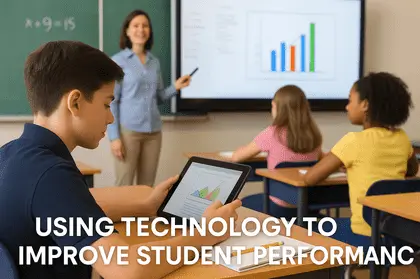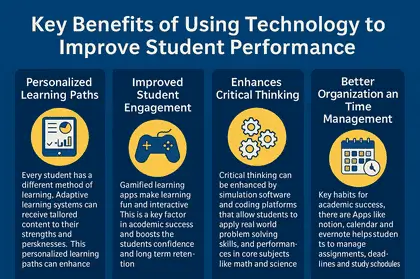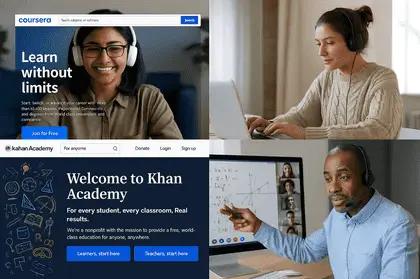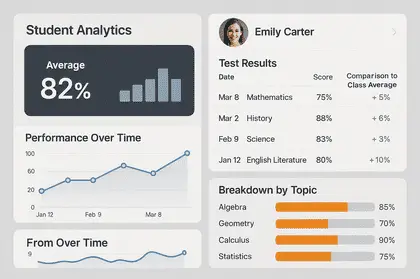Using Technology to Improve Student Performance

In today’s digital era, using technology to improve student performance is not an idea but its reality. To learn and to track academic progress, many schools, colleges and universities are focused on the use of technology to improve student performance. Technology in education has become an essential partner in shaping academic success with the aim of improving students’ performance.
Why Technology Matters in Education

Technology has an important place in education. It has revolutionized the education method. Here’s how:
- Instant access to information:
- Interactive learning platforms
- Real-time feedback
These features contribute directly to student achievement
Key Benefits of Using Technology to Improve Student Performance

Here are the key benefits of using technology to improve students performance:
Personalized Learning Paths
Every student has a different method of learning. With adaptive learning systems, students can receive tailored content to their strengths and weaknesses. These personalized learning paths can enhance a student’s performance.
Improved Student Engagement
Gamified learning apps make learning fun and interactive. This is a key factor in academic success and boosts the students confidence and long-term retention.
Enhances Critical Thinking
Critical thinking can be enhanced by simulation software and coding platforms that allow students to apply real–world problem-solving skills, and performance in core subjects like math and science.
Better Organization and Time Management
Key habits for academic success, there are Apps like Notion, Calendar and Evernote that help students manage assignments, deadlines and study schedules.
Role of Teachers in Tech-Driven Learning

Facilitators of Learning
Now, teachers can guide and mentor students through technology tools and platforms and promote interactive learning.
Data-Driven Decisions
For data-driven decisions, teachers can use tools like Edmodo or ClassDojo to monitor students participation, assess understanding, and adjust teaching strategies.
Online Learning Platforms Transforming Education

Here are some online learning platforms that transform education:
- Khan Academy: Mastery-based learning paths in subjects like Math and Science
- Coursera: High-quality courses from top universities worldwide
- Edmodo: Secure communication and assignment submission platform
- Quizizz: Self-paced quizzes for practice and reinforcement
These platforms promote self-directed learning, improve knowledge retention.
For more helpful tools, check out this list of study apps every student should use to boost your learning experience.
Tech Tools for Assessment & Feedback

Digital Quizzes & Polls
Immediate results from tools like Google Forms or Socrative help both teachers and students understand gaps in knowledge.
Progress Trackers
It shows individual and class-wide progress, allowing for performance-based interventions.
AI-Powered Tools
It saves teachers time while helping students focus on their weak areas.
Smart Classrooms = Smart Students

Smart classrooms equipped with:
- Interactive whiteboards
- Virtual reality labs
- High-speed internet
- Student response systems
Create a modern, engaging, and performance-enhancing environment that aligns with the digital habits of today’s students.
Addressing Challenges in Tech Integration

While using technology to improve student performance, it also comes with challenges.
- Digital divide
- Tech training
- Distraction risk
Solutions include government policies, affordable internet schemes, and digital literacy programs for teachers and students.
Actionable Tips for Students & Educators

For Students:
- Use apps like Forest or Focus Keeper to reduce distractions
- Watch educational YouTube channels for revision
- Take self-assessment quizzes after each chapter
For Educators:
- Blend offline lessons with online activities
- Use visuals and simulations to explain tough topics
- Monitor individual performance using learning analytics tools
To explore more about the impact of educational technology, you can visit Edutopia’s guide on technology integration.
Conclusion
At the end of this article, using technology to improve students’ performance is not just a trend, it is a strategy that enhances learning outcomes both for students and educators. Looking ahead, machine learning will continue to transform student learning. As the technology revolution reshapes education, adopting smart tools and platforms is essential to motivate every learner.
